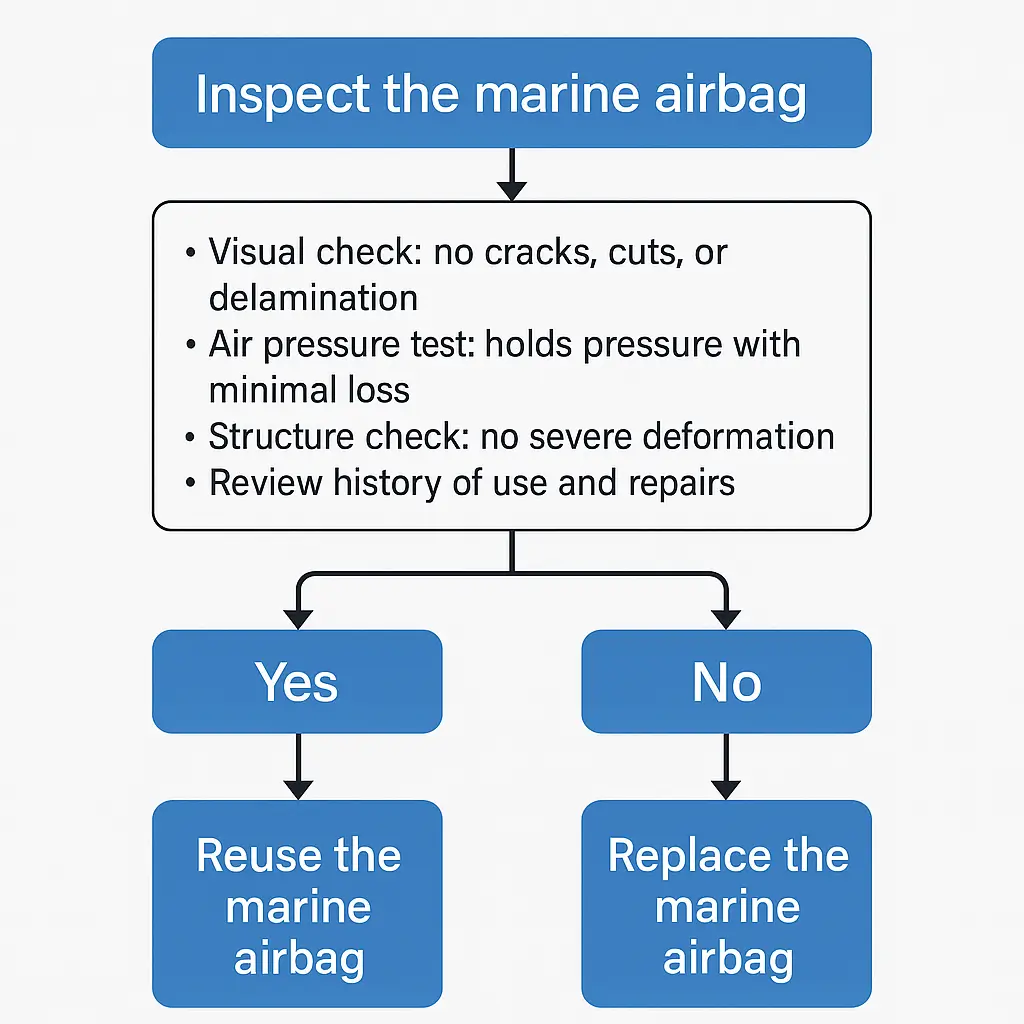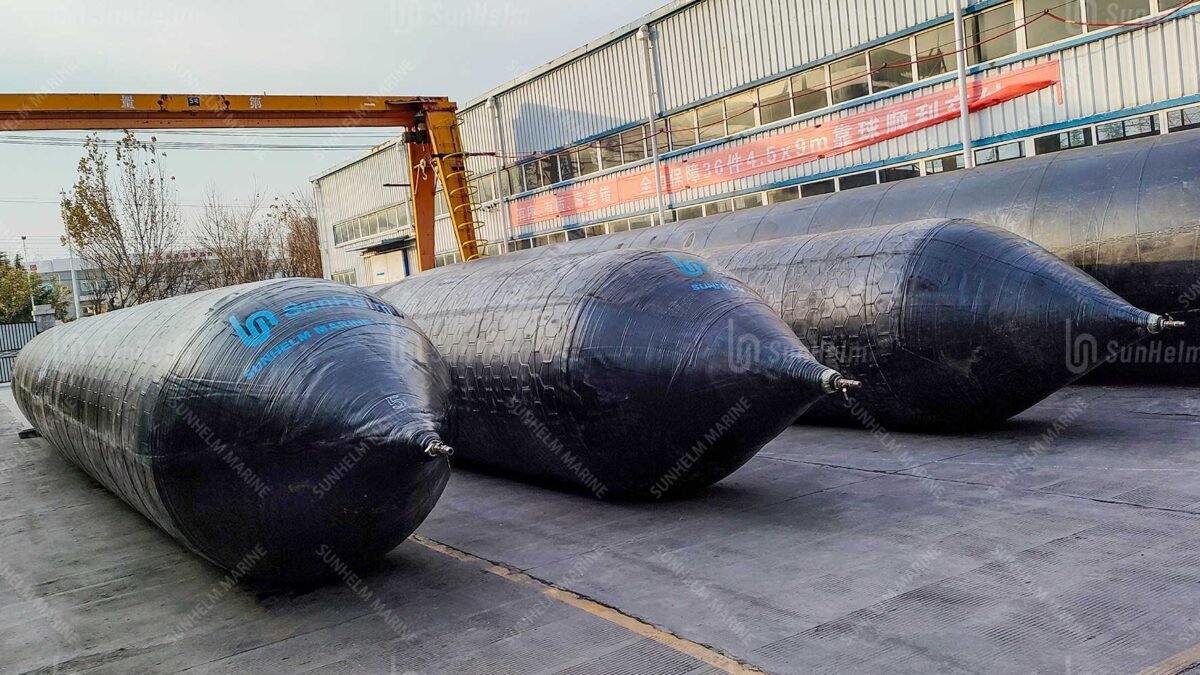Introduction
Yes — marine airbags can be reused if they pass a proper inspection and meet the manufacturer’s safety guidelines. Before reuse, check for visible damage, test air pressure retention, and confirm there is no structural delamination. Well-maintained marine airbags can last for more than 10 uses, but poor storage or heavy damage can shorten their lifespan.
1. What are marine airbags?
Marine airbags are heavy-duty inflatable bags made from multiple layers of rubber and synthetic fabric (cord layers). They’re mainly used for:
- Ship launching and landing
- Salvage operations and ship relocation
- Heavy load moving and cushioning
Unlike fixed steel slipways, marine airbags are flexible, portable, and work on different terrains and environments.
2. Can marine airbags be reused?
Short answer: Yes — if they’re in good condition and pass proper checks.
Key factors that decide reuse:
- Material condition – Any cracks, aging, or surface hardening?
- Air tightness – Can it hold pressure for long periods?
- Structural integrity – Any broken or delaminated cord layers?
- Usage history – How many inflations/deflations, what pressures, and in what environments?
- Manufacturer guidelines – Most will state a maximum cycle count or lifespan.
With good care, some marine airbags can be reused more than 10 times. But never guess — always inspect first.
3. Inspection steps before reuse
If you want to reuse marine airbags, follow this process:
a. Visual check
- Look for cuts, deep scratches, and bulges.
- Check the inflation valve for damage or looseness.
- Watch for faded or discolored areas — this may mean aging.
b. Air pressure test
- Inflate to 90% of the working pressure and leave for 24 hours.
- Pressure drop should be within the allowed limit from the manufacturer.
- Use soapy water to find small leaks.
c. Structure check
- Press on suspicious areas to feel for hollow spots or uneven hardness.
- If you find delamination or broken cord layers — retire the airbag.
d. Record and track
- Log every use with date, pressure, and type of job.
- Keeping a usage history helps predict lifespan.

4. Repair or replace?
Some marine airbags can be repaired:
- Small punctures (patched with proper materials)
- Minor surface wear (sand and recoat with repair compound)
But avoid repairs if:
- There’s major delamination or broken cords
- The airbag can’t hold pressure
- It’s been exposed to harsh chemicals or extreme temperatures
Repairs can save money, but safety comes first. If there’s doubt, replace it.
5. Safety and compliance
Before reusing marine airbags:
- Work within the safety factor – Don’t load them near the maximum rated capacity.
- Get third-party inspection – For critical jobs, have them checked by a classification society or independent surveyor.
- Check insurance rules – Some policies require proof the airbags passed inspection.
6. Storage and maintenance
Good storage makes marine airbags last longer:
- Clean and air-dry after use (avoid direct sunlight).
- Store in a cool, dry, indoor place.
- Keep away from sharp objects and chemicals.
- Rotate or reposition the airbags occasionally to avoid deformation.
7. Real-world example
One shipyard reused the same batch of marine airbags for five years, launching over 12 vessels. Their success came from:
- Careful inspection before and after each job
- Keeping inflation pressure below the maximum limit
- Storing them in a clean, temperature-controlled space
On the flip side, another company stored theirs outdoors in the sun and damp air — they cracked after only two uses.
8. Conclusion
Marine rubber airbag can be reused, but only with proper inspection and care. The golden rules:
- Inspect before and after every use
- Keep accurate usage records
- Follow the manufacturer’s recommendations
- Retire damaged airbags immediately
Remember: Saving money is good — but cutting corners on safety can be far more costly.
FAQ
Q1: How many times can marine airbags be reused?
A1: It depends on quality, environment, and maintenance — some last 10+ uses, others only 3–5.
Q2: Are repaired marine airbags safe for ship launching?
A2: Minor repairs are fine if they pass pressure tests. Major structural damage? Retire them.
Q3: What tests should be done before reuse?
A3: Always do a visual inspection and a pressure test; check the structure if needed.
Q4: How should marine airbags be stored between uses?
A4: Clean, dry, shaded storage away from sharp or corrosive materials.


